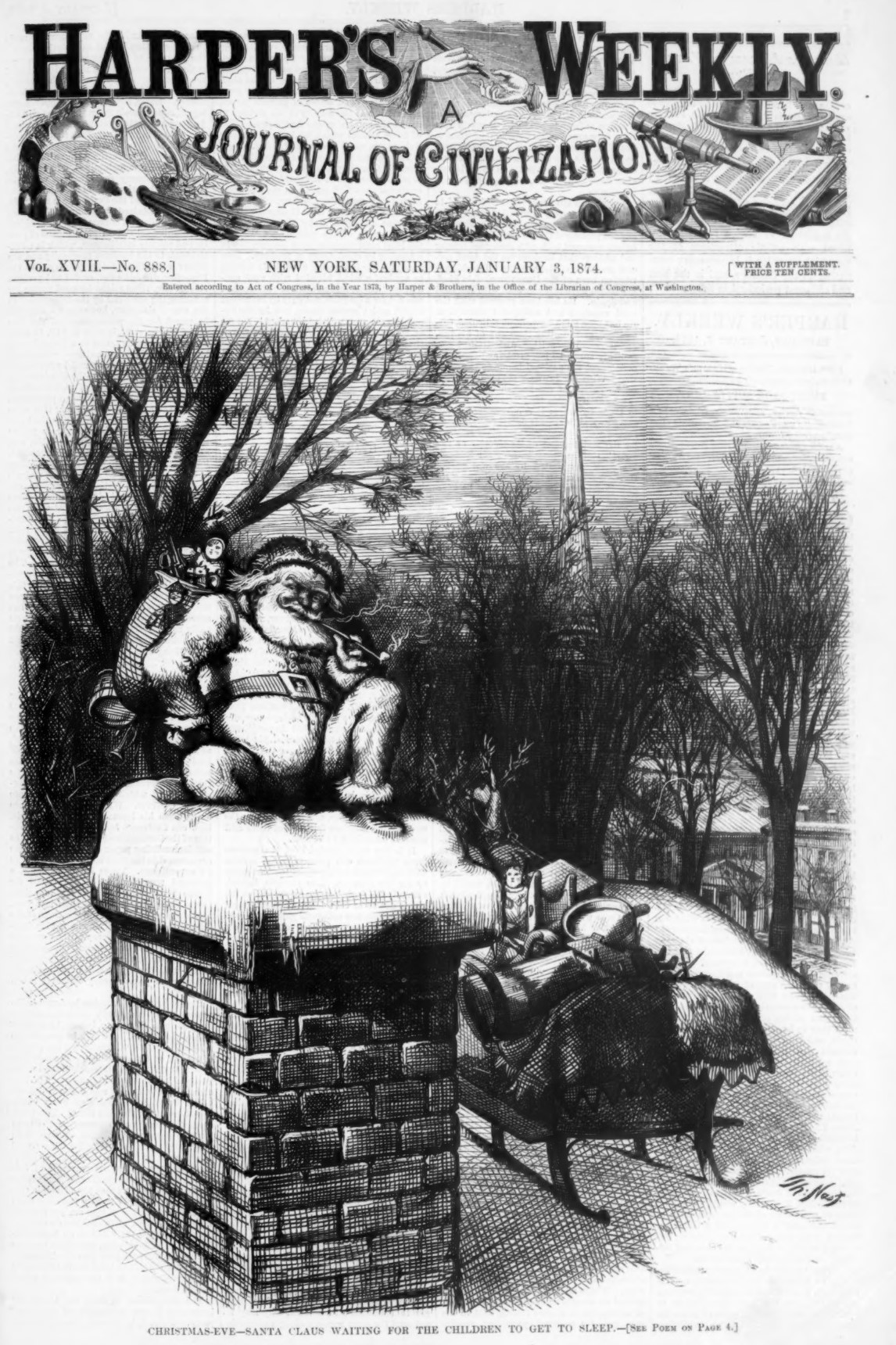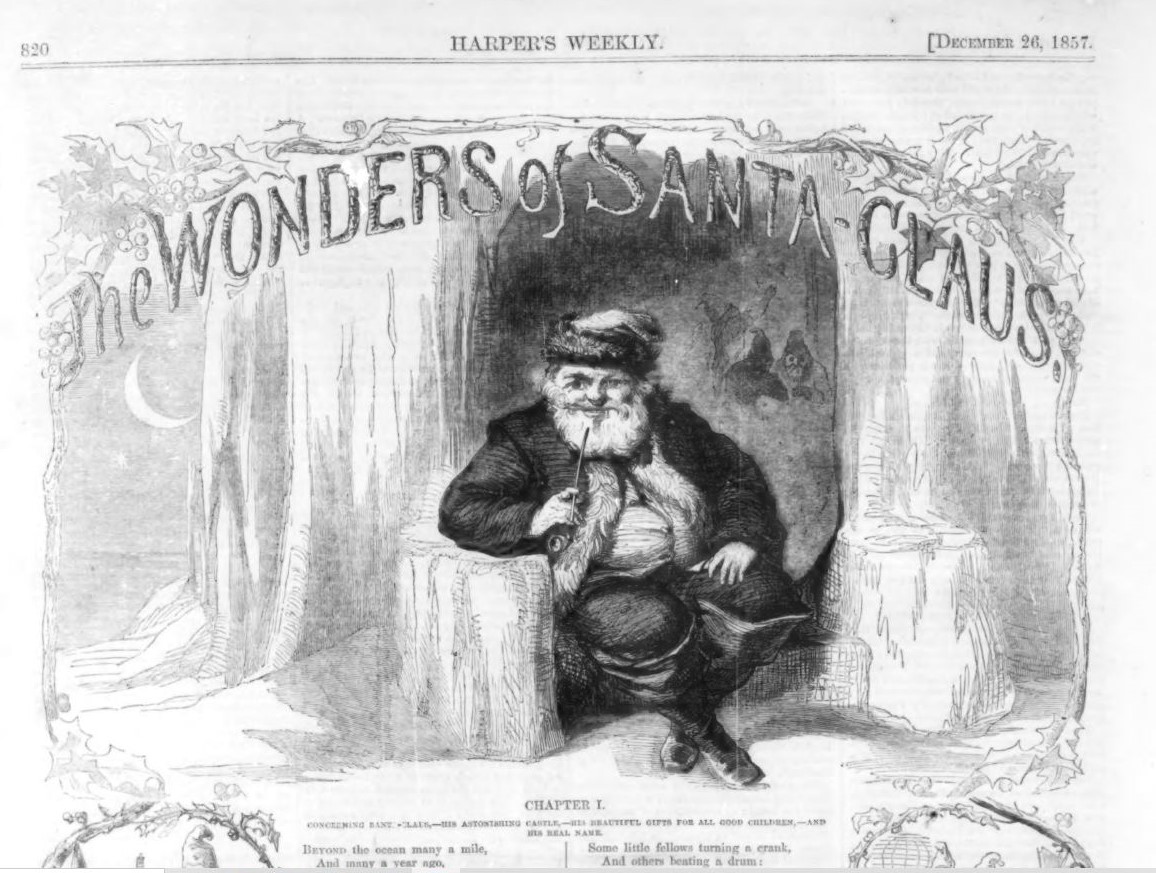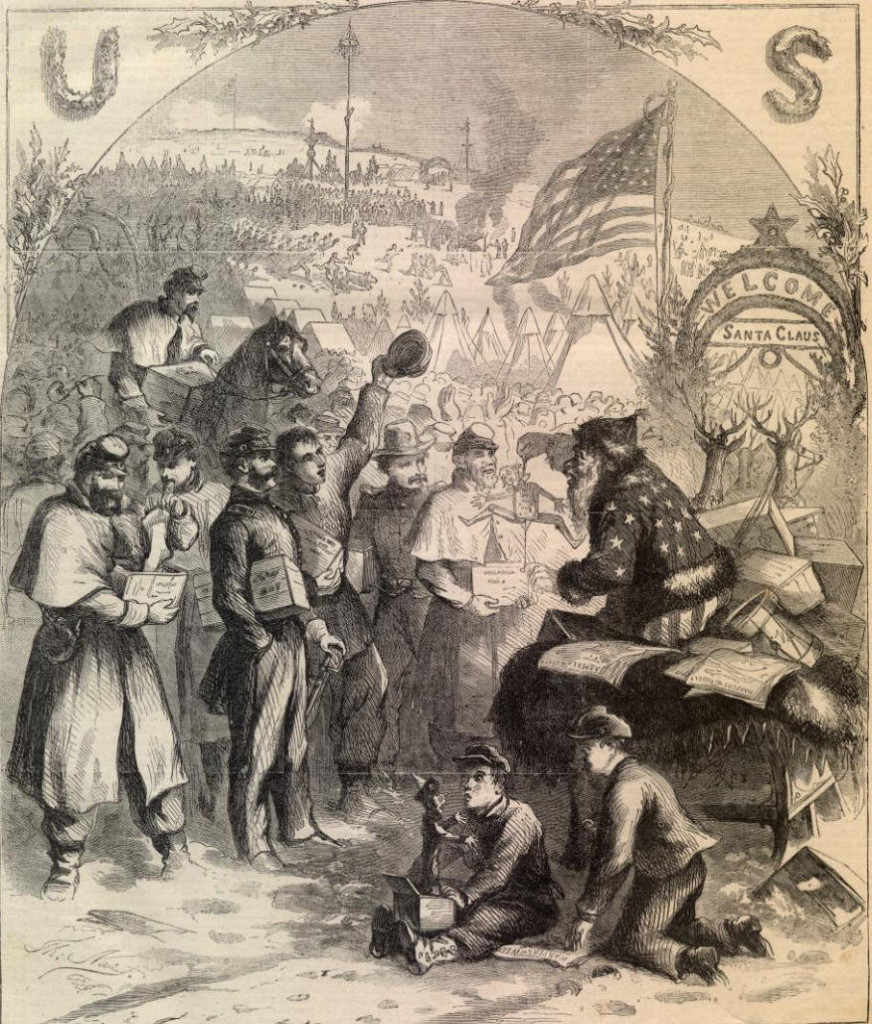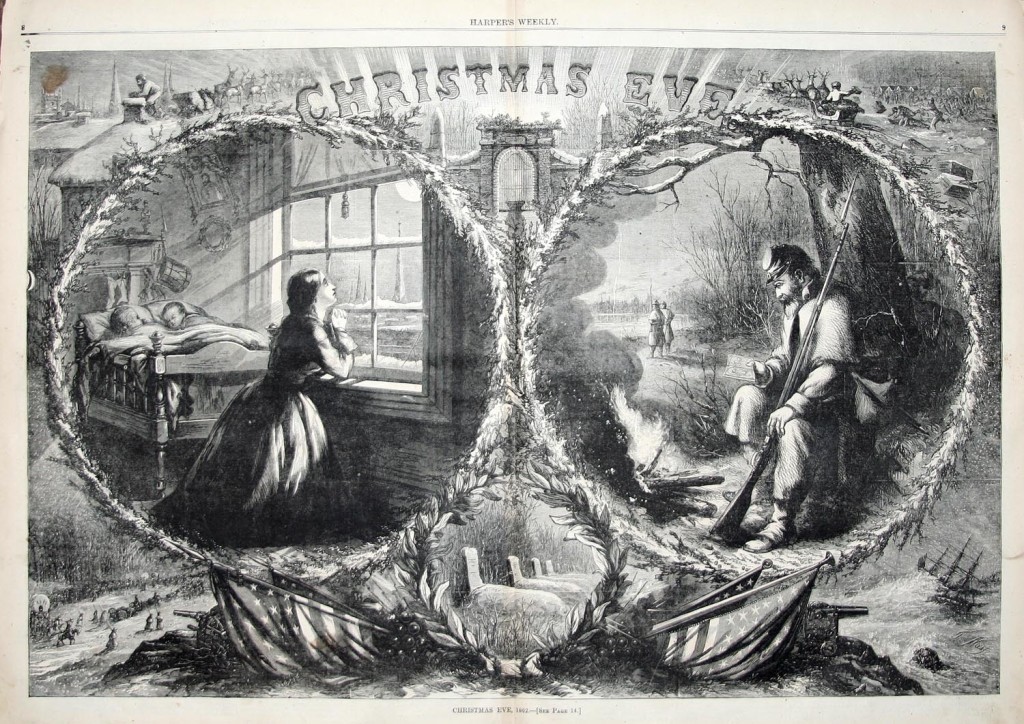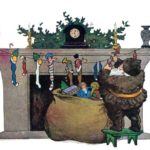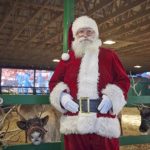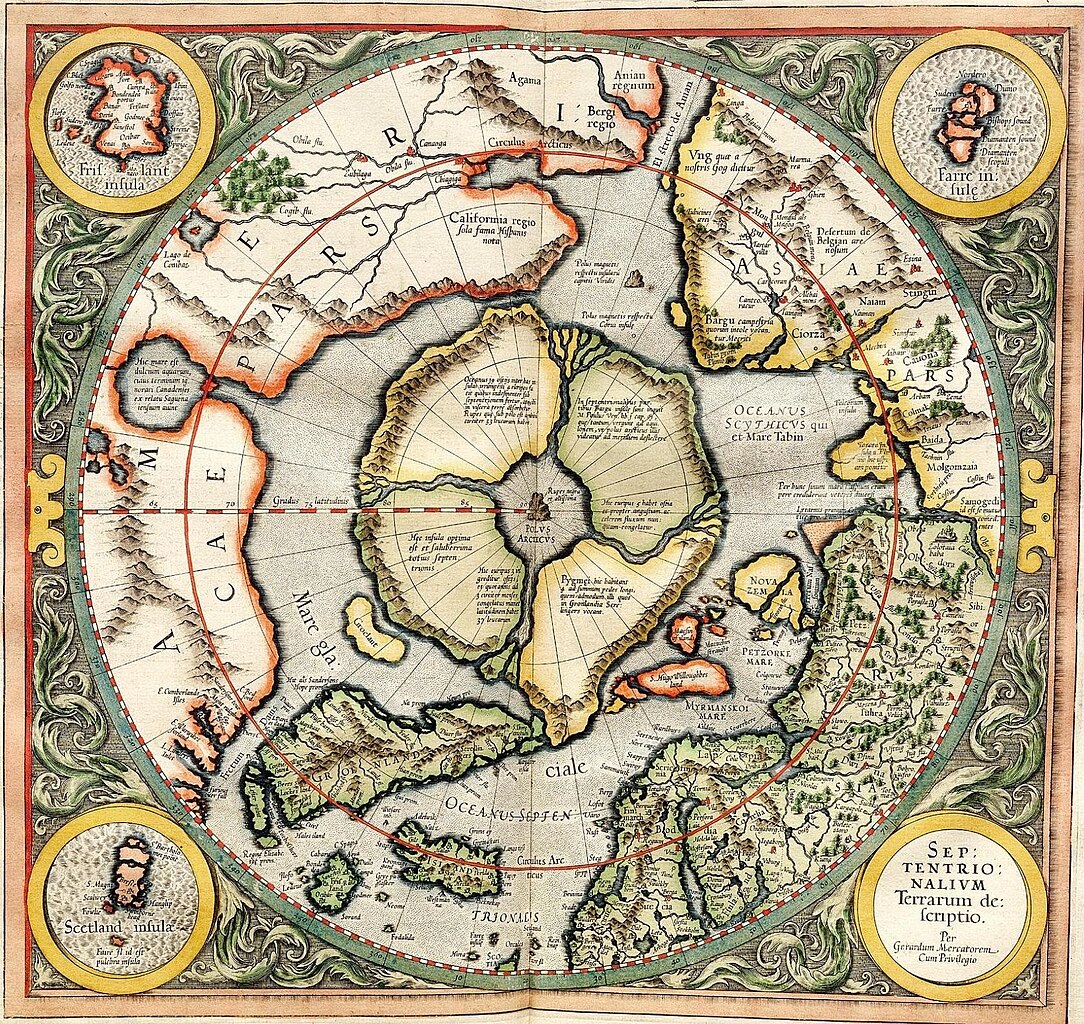“A Visit from from St. Nicholas” was first published anonymously in the Troy Sentinel on Dec. 23, 1823. The poem was later attributed to Clement Clarke Moore and has become more widely known as “The Night Before Christmas.” According to Rebecca Sicree, writing in the November/December 2023 issue of Touchstone: A Journal of Mere Christianity, “It is impossible to overestimate how much Moore’s poem has influenced the celebration of Christmas in the United States. Before Moore, the newly independent country had no common American Christmas traditions. After the advent of Moore’s poem, pictures of Santa Claus showed him short and fat, like one of the Seven Dwarfs, though he eventually regained his adult height.” Rebecca Sicree points out that Clement Moore’s poem encouraged the transition from saint to modern Santa Claus because of these lines:
He was chubby and plump, a right jolly old elf,
And I laughed when I saw him in spite of myself. . . .
Fifty years after the poem, Harper’s Weekly clearly identified a plump, shortish night visitor as Santa Claus:
Based on the poem accompanying Thomas Nast’s illustration, it seems that Santa really likes his privacy and history … but if you’re 1500 years old, the arctic explorers might be more like current events:
In her article Rebecca Sicree explains that everyone assumed Santa was pretty much a lone elf until a poem in the December 26, 1857 issue of Harper’s Weekly. “The Wonders of Santa Claus” includes this stanza:
In his house upon the top of a hill,
And almost out of sight,
He keeps a great many elves at work,
All working with all their might,
To make a million of pretty things,
Cakes, sugar-plums, and toys,
To fill the stockings, hung up you know
By the little girls and boys.
The same poem revealed Santa Claus’ true identity:
But it were an endless task to tell,
The length that the list extends,
Of the curious gifts the queer old man
Prepares for his Christmas friends.
Belike you are guessing who he is,
And the country whence he came.
Why, he was born in Germany,
And St. Nicholas is his name.
According to Wikipedia, Clement Moore’s famous poem had a precursor:
“Old Santeclaus with Much Delight” is an anonymous illustrated children’s poem published in New York in 1821, predating by two years the first publication of “A Visit from St. Nicholas” (Twas the Night before Christmas). It is the first publication to mention (and illustrate) Santa Claus’s reindeer and his sleigh, as well as being the first to describe his arrival on Christmas Eve. The accompanying illustrations are the earliest published artistic depictions of a Santa Claus figure.
____________
Old Santeclaus did leave the stockings and presents in the children’s bedroom. Bad children didn’t receive a lump of coal – they received a stocking with “a long, black, birchen rod” for parental application.
Harper’s Weekly and its cartoonist Thomas Nast had a lot to do with Santa’s development, even during the American Civil War. Read about it at American Battlefield Trust.
So Santa Claus has evolved over the centuries.

![visit from st nick (A reprint of the first [sic] publication of "A visit from St. Nicholas." [n. p., ca. 1919].; LOC: https://www.loc.gov/item/rbpe.11804300/?q=a+visit+from+st.+nicholas)](https://www.bluegrayreview.com/wp-content/uploads/2017/12/visit-from-st-nick.jpg)
